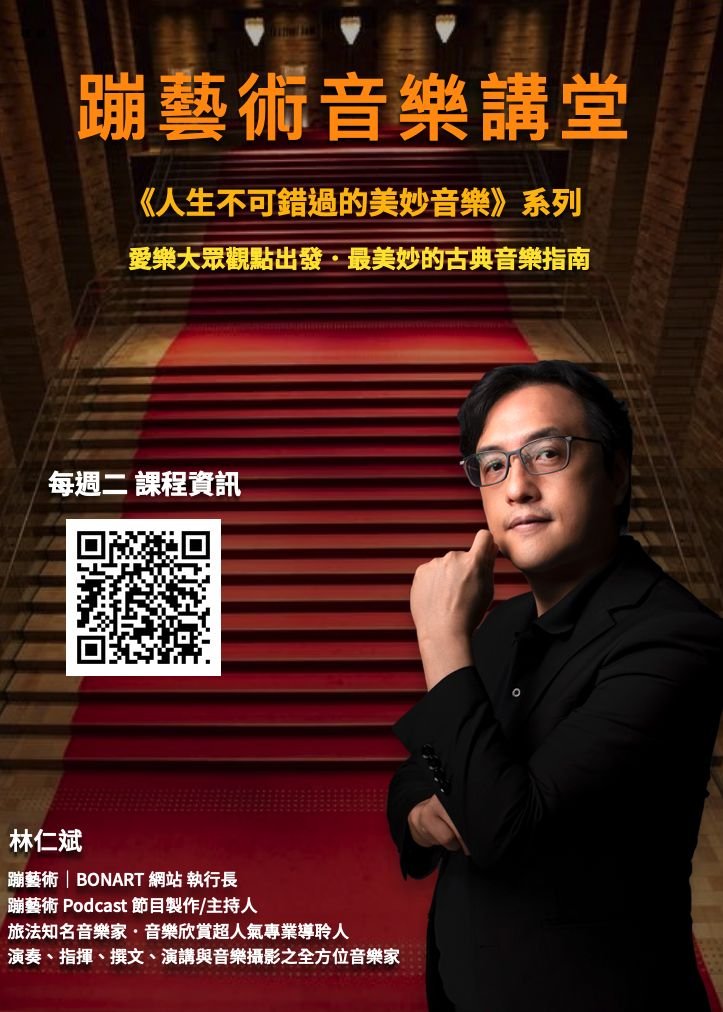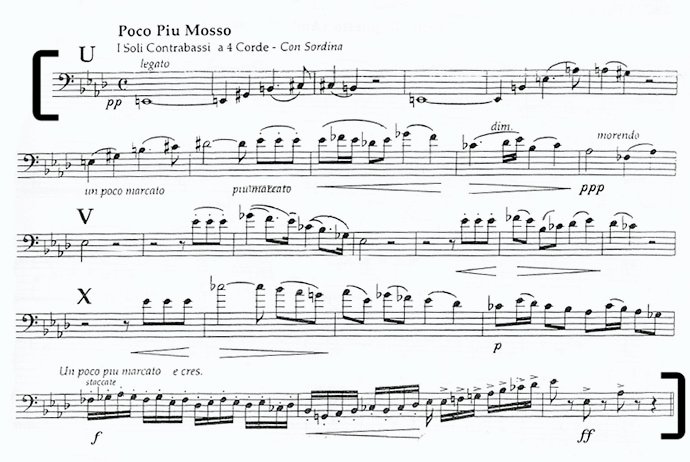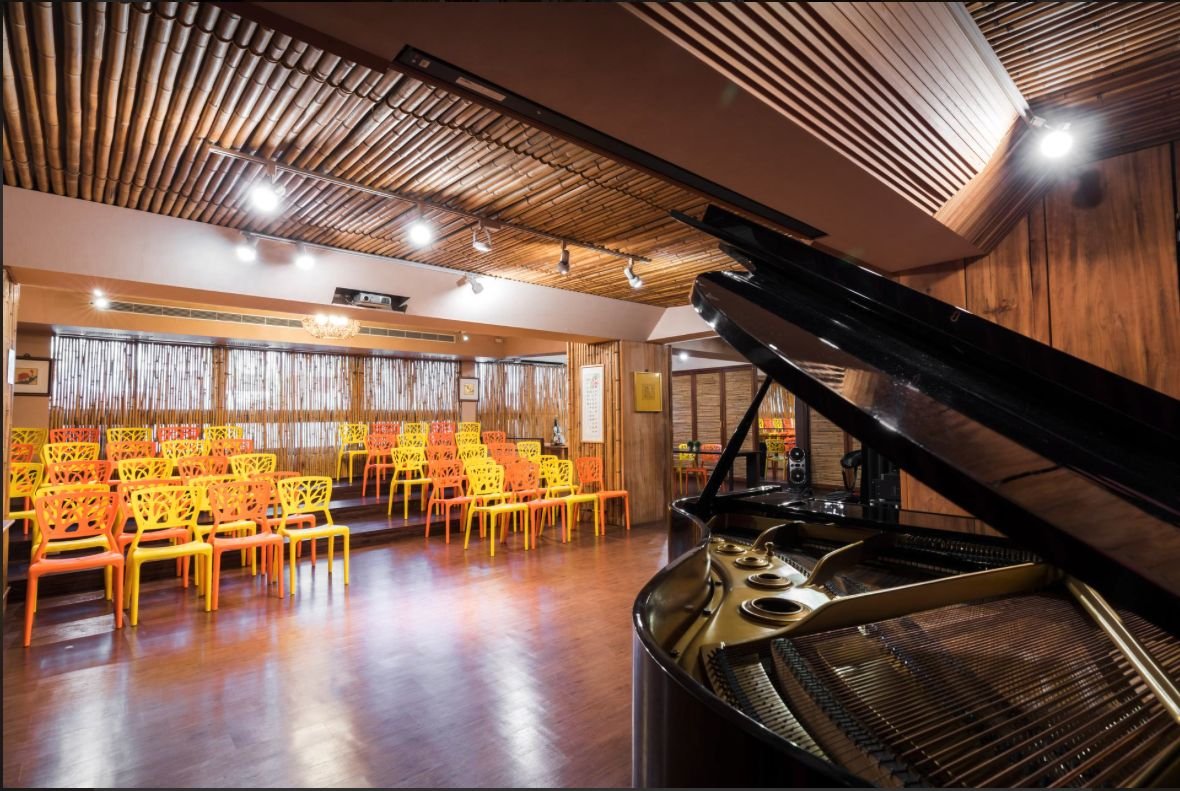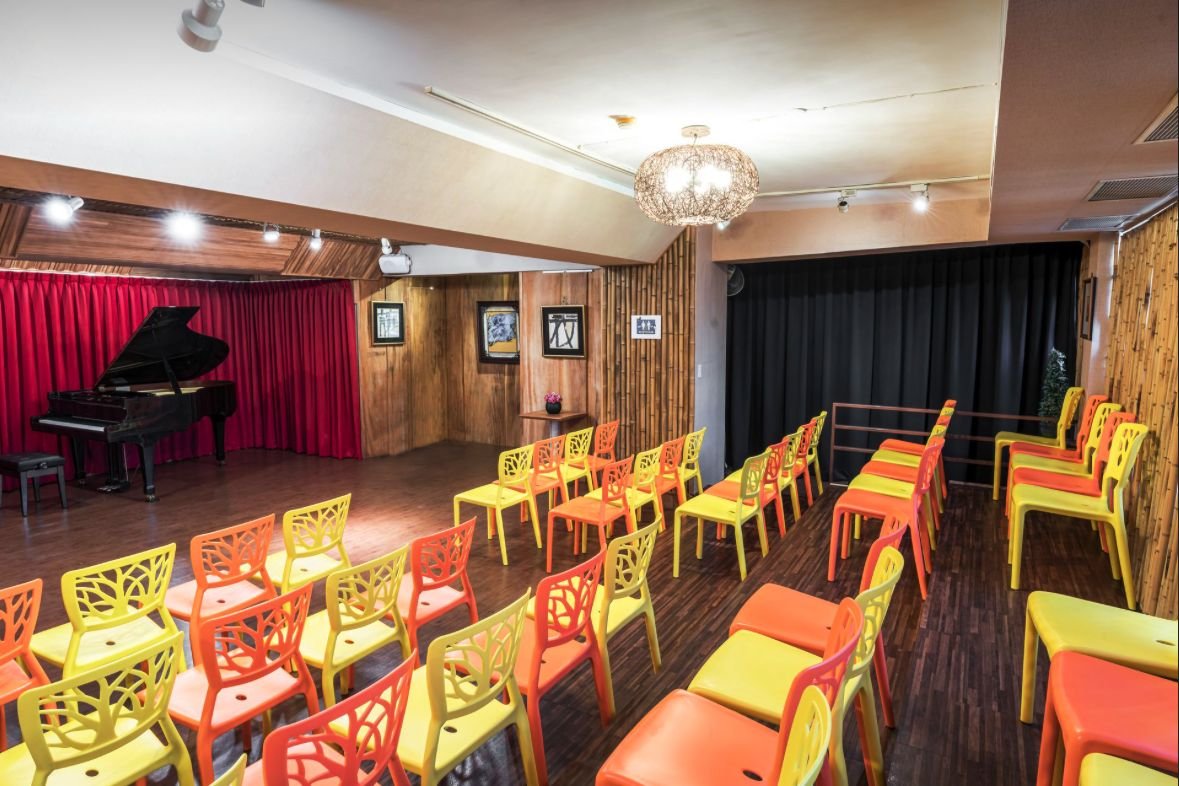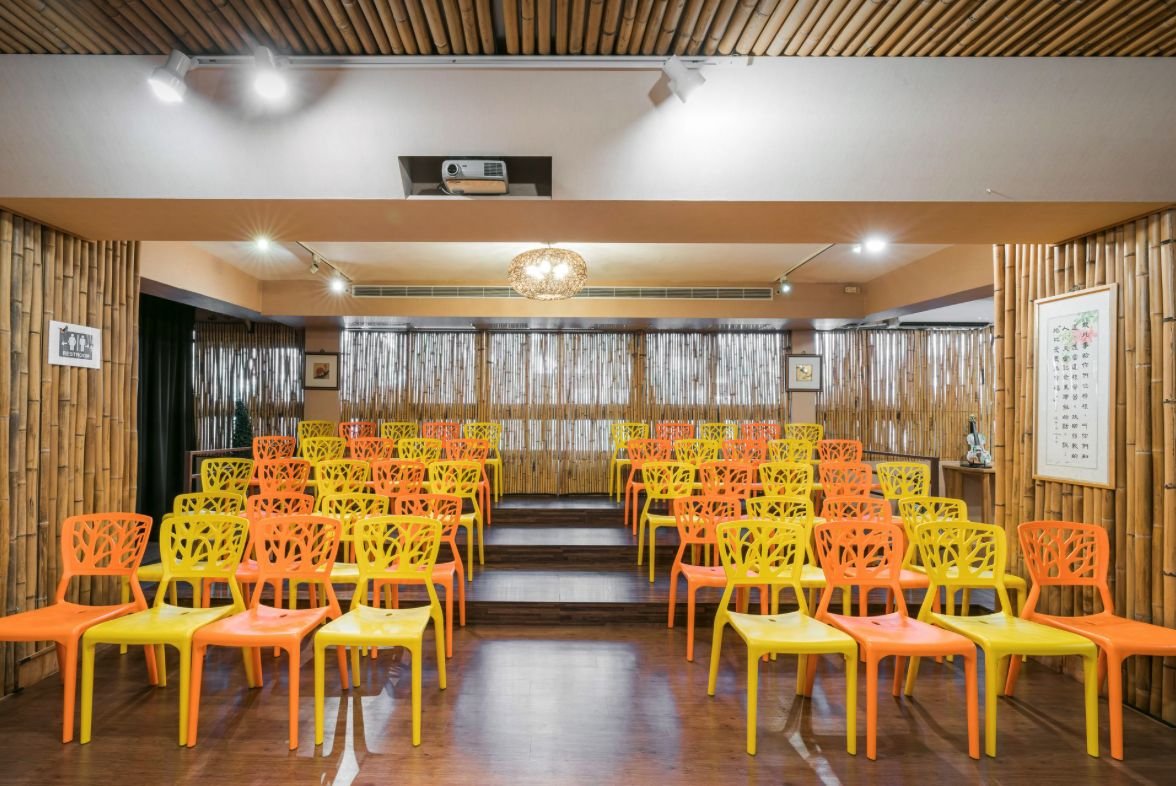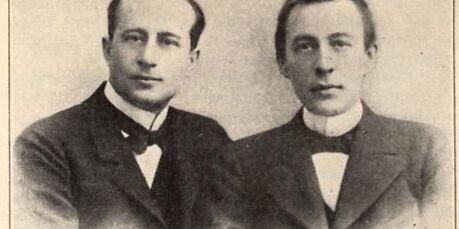【BON音樂】蹦藝術週二講堂《人生不可錯過的美妙音樂》- 不可錯過的十首低音提琴音樂
Top 10 wonderful double bass music
– 資訊整理共享於網路,一起欣賞音樂與藝術之美 –
蹦藝術 | BONART
蹦藝術音樂講堂由旅法知名音樂家林仁斌,也是蹦藝術藝術網站執行長規劃並擔任主講。
結合蹦藝術網站豐富多元的系統化資料,林仁斌老師輕鬆幽默的上課內容與清晰俐落的口條,多年來深獲各界肯定,並與國家兩廳院、衛武營國家文化藝術中心、苗北藝文中心、NSO國家交響樂團、長榮交響樂團、高雄市交響樂團、大人社團等各單位合作各式音樂講座,年演講場次超過200場,是台灣超人氣音樂欣賞名家。
音樂的面向極其廣闊,也間接影響我們腦部活動很大。經由專家研究,當欣賞美妙音樂而感動時,大腦的「獎賞中樞」會產生反應,分泌出「多巴胺」,給予我們愉快的感受。
在蹦藝術音樂講堂充滿特色與循序漸進的主題規劃之下,您將發現欣賞古典音樂、理解各種作品類型,都將為您的生活中帶來更豐富愉快的感受;您所需要做的,就是悄悄地埋下這快樂的種子,坐進講堂,好好欣賞每一場知識與含金量滿滿的專屬演講。
古典音樂 X 精彩繽紛美好人生
在蹦藝術音樂講堂,您將體驗到:
❶ 全面認識古典音樂世界.從基礎到進階
❷ 深入了解音樂史、專有名詞到作曲家故事
❸ 沈浸式課堂解說.艱澀知識一次融會貫通
❹ 老師與粉絲互動Q&A,從傳道授業到解惑
→2023年最新系列請由此進
課程主講人:
人生海海,更有著許多不可錯過的美好音樂
由蹦藝術林仁斌老師為您精選四堂成為一系列之各種「滄海桑田.人生絕不錯過的美好音樂」
「人生不可錯過的美妙音樂」系列(四)
日期: 2022/12/27、2023/1/3、1/10、1/31
一、不可錯過的十首小提琴音樂
二、不可錯過的十首中提琴音樂
三、不可錯過的十首大提琴音樂
四、不可錯過的十首低音提琴音樂
「人生不可錯過的美妙音樂」系列(五)
日期: 2023/2/7, 2/14, 2/21, 3/7
一、不可錯過的十首長笛音樂
二、不可錯過的十首單簧管音樂
三、不可錯過的十首雙簧管音樂
四、不可錯過的十首低音管音樂
「人生不可錯過的美妙音樂」系列(六)
日期: 2023/3/14, 3/21, 3/28, 4/11
一、不可錯過的十首豎琴美妙音樂
二、不可錯過的十首弦樂四重奏音樂
三、不可錯過的十首弦樂五重奏音樂
四、不可錯過的十首極致室內樂音樂
【課程資訊】
課程時間:每週二下午2:00-4:00
課程時數:一系列四堂課、每週上課一次。
上課地點:鳴石音樂空間(台北市中正區仁愛路二段34號5F,近捷運東門站)
【課程費用】
單堂- $700
單系列(四堂) $2,680 (九五折)
報名網頁QR Code
低音大提琴介紹
低音提琴介紹 Double Bass
作為對比,一起看看大提琴介紹
先從經典的幾個管弦樂片段開始欣賞
馬勒第一號交響曲《巨人》第三樂章 低音提琴獨奏解說
阿巴多指揮琉森節慶管弦樂團
Mahler: 1. Sinfonie ∙ hr-Sinfonieorchester ∙ Andrés Orozco-Estrada
圖解:德式弓與法式弓
演奏基本姿勢圖解
低音提琴的法式持弓
低音提琴的德式持弓
法式持弓的撥弦與拉弦轉換
德式持弓的撥弦與拉弦轉換
再來更多的低音提琴片段
貝多芬:第九號交響曲 第四樂章大師班
貝多芬:第九號交響曲 專業級示範(芝加哥交響樂團首席)
貝多芬:第九號交響曲 第四樂章 更多段落示範
歌劇《奧泰羅》經典第四幕 低音大提琴獨奏段落
Verdi, Giuseppe FINE AUTOGRAPH MANUSCRIPT AND ACCOMPANYING LETTER SIGNED (“GVERDI”) ABOUT OTELLO, SENT TO THE CELEBRATED DOUBLE-BASS PLAYER GIOVANNI BOTTESINI comprising Verdi’s autograph transcript of the part for the double basses in Act IV, marking Otello’s entrance into Desdemona’s bed-chamber, together with an autograph letter to Bottesini, seeking his guidance and advice on how this passage should best be played by the double-bass section 1) the autograph manuscript written on five staves, comprising twenty-five bars in all, with the metronome marking, dynamics and articulation, marked by the composer “etc” at the end, 1 page, oblong 8vo (c.13 x 20cm), 10 stave paper by Lard-Esnault of Paris, trimmed from a larger leaf, folded by the composer 2) the unpublished autograph letter accompanying the manuscript, in which Verdi explains that maintaining the intonation in this passage for muted double basses is problematic, because of the inconsistent approach of the players to the choice of hand-position; he asks Bottesini to mark on the enclosed transcript which position offers the best and most secure solution, averring that his authority in this field is so great that his will be the definitive judgement, asking Bottesini about his health and informing him that Giuseppina has also recently undergone an operation, 3 pages, 8vo (c.17.5 x 11.5cm), De La Rue paper, autograph envelope (“a Bottesini/ Londra”), Genoa, 2 May 1887, splitting along folds, …E’ un po’ difficile per se stesso questo solo: difficile per le distanze in orchestra: difficile per l’intonazione perchè non tutti e non sempre suonano colle stesse posizioni. Io vorrei pregarti di segnarmi sul pezzo di carta di musica che qui unisco le posizioni che crederai piu sicure e più facili… Verdi’s letter is unpublished: not in Hans Busch, Verdi’s Otello and Simon Boccanegra (revised version) in Letters and Documents, 2 volumes (Oxford: 1988). After Desdemona’s anguished cry at the end of her “Ave Maria”, the music subsides and Otello comes into her bedroom, intent on murder. His stealthy entrance is accompanied by one of the most extraordinary passages in the opera, played by the double-bass section alone. Verdi was dissatisfied with early performances and sought the guidance of the leading double-bass player, Giovanni Bottesini. The present letter is evidently the one that Verdi asked Ricordi to forward to Bottesini in London, which is hitherto unknown (See Busch, p.309 and note). Later, in a letter of 22 May 1887, Verdi asked his publisher Ricordi to insert Bottesini’s suggestions into the score, evidently without success, for these fingerings do not survive. Bottesini was also a composer and conductor who directed the premiere of Aida in Cairo in 1871. Intonation in the double basses in this passage remains a problem even today.
威爾第於 1887年寫給低音大提琴演奏家BOTTESINI之《奧泰羅》第四幕 獨奏段落手稿
G. VERDI, AUTOGRAPH MANUSCRIPT OF PART OF “OTELLO”, WITH A LETTER TO BOTTESINI, 1887
Double Bass: Verdi: Othello, Act IV (Reh. U until 7m after Reh X)
交響樂片段演奏示範
歌劇第四幕 女主角黛絲德蒙娜死亡場景前 象徵奧泰羅腳步聲之低音大提琴獨奏片段
延伸閱讀
更多好聽的低音提琴音樂
Spotify上的低音提琴音樂播放清單
頻率測試
20Hz to 20kHz (Human Audio Spectrum)
低音提琴的原創作品音樂
18 of 45 original romantic pieces for double bass & piano
| 00:05 Károly Trautsch, Moment de Valse
07:22 Adolf Moissl, „Concert piece“ 18:58 Gustav Láska, Rhapsodie (Fidelio motiv) 26:00 Franz Simandl, Cavatine Op. 76 29:33 Ferdinand Domeier, “The Moonnight” Op. 20 (arr. by F.Simandl) 33:54 Johann Geissel, Konzertstück Op. 24 43:12 Ludwig Emanuel Manoly, Feuille d’ Album Op. 15 46:17 Karel Kukla, Nocturne 52:47 Károly Gianicelli, Recitativ & Aria 58:38 Karel Kukla, Impromptu 1:04:47 Oswald Schwabe, Romance 1:09:35 Franz Simandl, Scherzo capriccioso Op. 72 1:12:25 Rudolf Kleinecke, Phantasy about hungarian folk’s songs 1:18:58 Franz Jaksch, Elegy 1:24:46 Adolf Míšek, Concert-Polonaise 1:31:10 Mathias Aubrecht, Romance 1:35:35 František Gregora, Dumka and Capriccio (à la Polka) 1:41:12 Gustav Láska, Perpetuum mobile |
低音提琴的大黃蜂
一代巨匠:蓋瑞.卡爾(Gary Karr)的最後音樂會
這場在日本2019 年 11 月 24 日在日本藤澤(Fujizawa)的音樂會,錄音並未完全反映出低音提琴與鋼琴之間最平衡的效果,但對於喜愛一輩子投身低音提琴演奏的偉大音樂家蓋瑞.卡爾來說,這最後的公開正式演出,仍然是讓所有樂迷難忘的經典
巧克力般的音色.牛筋厚實的低頻=蓋瑞.卡爾❤️
★渾厚的低音提琴聲悠悠響起,唱出靈魂最深處的吶喊。低音提琴極致示範天碟,調整低頻不可少的利器!
★德國頂尖的Pauler Acoustics精心後製,還原King Records錄音的原汁原味!
渾厚的低音提琴聲悠悠響起,唱出靈魂最深處的吶喊。這不是「Danny Boy」嗎?這首曲子原名「Londonderry Air」(倫敦德里小調),倫敦德里與英國倫敦完全沒有關係,而是愛爾蘭的一處地名,後來被詞曲創作者Frederic Weatherly填上「丹尼男孩」的歌詞,而成為愛爾蘭最具代表性的音樂,也是發燒友最愛的低音提琴曲目之一。King Records在專輯第一首就選了這首曲子,確實非常能代表蓋瑞.卡爾(Gary Karr)的精湛琴藝。事實上,這張專輯收錄的13首曲目涵括蓋瑞.卡爾在King Records所留下的錄音之精華,包括「聖誕夜」、「向星星許願」、阿比諾尼的「慢板」、蓋西文的「夏日時光」、小提琴名曲改編的「歡樂的迴旋曲」、巴哈的「G弦之歌」、「小步舞曲」,以及「耶穌,世人仰望的喜悅」等經典詮釋,所以稱為「發燒天碟精選」。 1942年出生於美國洛杉磯的蓋瑞.卡爾不但是音樂史上第一位以低音提琴為獨奏樂器的音樂家,更被媒體譽為「全世界最傑出的低音提琴獨奏家」,稱他為「低音提琴之神」一點都不為過。蓋瑞.卡爾之所以廣受推崇,除了精湛的琴藝之外,他所演奏的阿瑪悌(Amati)名琴更是讓音響迷熱愛的主因。這把名琴是由俄裔美籍的大指揮家庫塞維斯基(Serge Koussevitzky, 1874-1951)遺孀所贈與,為了表達感恩之心,蓋瑞.卡爾還特別成立基金會,提供名琴給年輕音樂家使用。專輯中擔任鋼琴與管風琴伴奏的是老搭檔Harmon Lewis,兩人完美的默契讓音樂充滿迷人的魅力,King Records優異的錄音技術更在這張專輯中一覽無遺。極光音樂特別取得King Records的原始母帶,請德國的Pauler Acoustics重新母帶處理,讓這份經典的錄音重現光輝。(出自唱片公司文案)
倫敦低音提琴樂團與蓋瑞.卡爾的唱片錄音
《粉紅豹》的五把低音提琴版本
個人興趣與蹦友們分享~
爵士音樂中的低音提琴獨奏音樂
音樂講座場地
鳴石音樂空間
地址:100台北市中正區仁愛路二段34號5F(近「東門」捷運站)
鳴石音樂空間是位於台北市區的一個充滿復古氣息的小型表演場地。展演空間可以容納50人,備有Kawai平台琴、投影等影音設備,適合舉辦沙龍音樂會、音樂欣賞、錄影及講座等各種藝文活動。
精緻.溫暖.樂迷專屬的藝文空間
明亮.舒適的觀眾席(全自由席)
開卷蹦藝術.享受美好閱讀時光
☕️一杯咖啡.一點心意.支持蹦藝術☕️
各類合作提案,聯繫方式:
*手機:0917.670.518
*Line:https://line.me/ti/p/LB1ro0P0AU
*E-mail:jenpin888@gmail.com
更多音樂新知
2024-07-25
【BON音樂】蹦藝術X大人社團 -浪漫巨人-拉赫曼尼諾夫的鋼琴協奏之旅(二)第一號鋼琴協奏曲與前奏曲
這堂課林仁斌老師將以拉赫曼尼諾夫完成於1892年,修改於1917年的第一號鋼琴協
2024-07-18
【BON音樂】蹦藝術X大人社團 -浪漫巨人-拉赫曼尼諾夫的鋼琴協奏之旅(一)立足現代,心在浪漫的音樂巨人:拉赫曼尼諾夫的生平
拉赫曼尼諾夫身兼作曲家、鋼琴家與指揮家,集所有音樂才華於一身,是公認全方位的音樂
2024-07-11
【BON音樂】蹦藝術X上海商業儲蓄銀行「豐富人生 X 音樂天地」公益講座:獵劇本高手、獵旋律高手、獵豔高手」:普契尼生平與他的音樂
在全世界十大上演率最高歌劇裡,普契尼就佔了三齣。他筆下細膩的愛情與詠嘆,流淌下無
